#Frank Duryea
Explore tagged Tumblr posts
Text
On Thanksgiving Day in 1895, While Navigating a Gas-Powered "Horseless Carriage" of His and His Brother's Invention, the Mechanic, Creator, and Now Race Car Driver Frank Duryea Triumphs in the First Motor-Car Race in America. November 28, 1895.
Photo of Charles (left) and Frank Duryea in the 1894 Duryea gasoline car. (Public Domain). On this day in history, on Thanksgiving Day (November 28) in 1895, while navigating a gas-powered “horseless carriage” of his and his brother’s invention, the mechanic, creator, and now race car driver Frank Duryea triumphs in the first motor-car race in America. The Chicago Times-Herald promoted the race…

View On WordPress
0 notes
Text

Dan Duryea-Patricia Owens "Asesinato por error" (Walk a tightrope) 1964, de Frank Nesbitt.
5 notes
·
View notes
Text




























Go For a Ride Day
Go For a Ride Day, celebrated on November 22, urges you to just get up and get out! Do you ever feel like you’re tied to your laptop/phone/tablet screens? We’ve become a pretty sedentary bunch — a far cry from the people who discovered countries, oceans, and animals simply by getting off the couch and exploring. Make today a day to set your spirit free and enjoy your wanderlust on whatever mode of transportation suits you best. Bike, boat, car, skateboard, sleigh—it doesn’t matter what you choose! Pick a location you’ve always wanted to visit and make today the day you’ll go.
History of Go For A Ride Day
Birthdays are fun and Christmas means presents (if you’re lucky), but nothing quite compares with the magical day you get your driver’s license. That’s when your world truly changes forever. Why? Cars mean freedom. You can suddenly go anywhere at anytime (as long as your parents are cool with your plans). Such is the nature of transportation — something we in the 21st century take for granted. We all grew up with planes, trains and automobiles — so we’re quite used to getting where we need to go.
But it wasn’t always that way. When President Jefferson asked Lewis (and, eventually, Clark) to explore the American West in 1804, there were no nonstop flights from St. Louis to the Oregon coast. As the History Channel describes it: “The excursion lasted over two years. Along the way they confronted harsh weather, unforgiving terrain, treacherous waters, injuries, starvation, disease and both friendly and hostile Native Americans. Nevertheless, the approximately 8,000-mile journey was deemed a huge success and provided new geographic, ecological and social information about previously uncharted areas of North America.”
And today we complain about trying to squeeze our carry-ons into the overhead bin.
Americans have always loved to “go for a ride” — with whatever mode of transportation existed. Horses. Boats. Bicycles. And of course, the ubiquitous car. The nation had a long love affair with automobiles starting in the mid 20th century and lasting until recently — as a new generation of car buyers, born after the car craze, loses interest in design — focusing instead on practicality. Stellar gas mileage makes Priuses as sexy as Porsches. Well, almost.
Go For A Ride Day timeline
1950s Car culture
Cars inspired new businesses like drive-through restaurants and drive-in movie theaters, and employed one in six working Americans.
1956 Interstate highways
President Eisenhower authorizes $25 billion for the construction of 41,000 miles of the Interstate Highway System.
1964 ‘Pony car’
Ford introduces the sporty and powerful Mustang — the automaker's most successful launch since the Model A.
2019 Driverless cars get smarter
MIT engineers develop a system to help autonomous cars determine if there’s a moving object coming around the corner.
Go For A Ride Day FAQs
What does Go For A Ride Day celebrate?
Go For a Ride Day 2019 encourages us to get out in the world, as opposed to seeing it on a screen. Any mode of transportation will do on this day. What was America’s first car company?
Brothers Charles and Frank Duryea founded the Duryea Motor Wagon Company in 1893, becoming the first American automobile manufacturing company. What happened to supersonic jet travel?
The Concorde, which flew faster than the speed of sound, never turned a profit. When the plane broke the sound barrier (about 760 mph), it created shock waves that would hit the ground with a loud and sudden sonic “boom.” The FAA eventually banned all commercial aircraft from flying at supersonic speeds over land.
Go For A Ride Day Activities
Make it fun
Make it easy
Make it memorable
Dare yourself to try something new and adventurous. Why not try a mode of transportation you’ve never used before? Suggestions include jet skiing, parasailing, or going on a hot air balloon ride. In colder climates you could try a sleigh ride, or a horse drawn carriage.
Maybe you weren’t born to be wild, but don’t let that stop you from joining in the fun. Play tourist in your own city or neighborhood. Use public transit and see the sights like visitor.
Exploring is an adventure, but it can be even more fun if you have someone to share it with. Bring along an adventurous friend or family member to help make some memories. If your local friends are sticks in the mud, then bring your more adventurous friends along virtually by posting your adventure to Facebook, Instagram, or Twitter.
Why We Love Go For A Ride Day
It’s an escape from reality
It can be great exercise
It helps us be spontaneous
Every now and then we just need something to break up the status quo and make us feel alive! Go For A Ride Day exists for that very reason. It can be hard to get motivated to see new places or even try new foods, but Go For A Ride Day provides the momentum.
You can try skateboarding or using a scooter. How about getting out your helmet and going for a long bike ride? Did you know you can burn over 400 calories an hour horseback riding?
Our lives tend to run to the predictable, and for the most part, that predictability helps the world go round. But we all still have a small streak of rebellion, and that's what Go For a Ride Day helps bring out.
Source
#Banff National Park#Fort Vermillion#Glacier National Park#USA#rental car#summer 2024#Sweden#original photography#travel#road trip#vacation#Chevrolet Suburban#Chevrolet Tahoe#Canada#Go For a Ride Day#22 November#NationalGoForARideDay#Ford Expedition#Jeep Wagoneer#street scene#Yellowknife#Edmonton#Oregon#Alberta#Northwest Territories#Idaho#Montana#California#Nevada#Yukon
5 notes
·
View notes
Text
Events 11.28 (before 1920)
587 – Treaty of Andelot: King Guntram of Burgundy recognizes Childebert II as his heir. 936 – Shi Jingtang is enthroned as the first emperor of the Later Jin by Emperor Taizong of Liao, following a revolt against Emperor Fei of Later Tang. 1443 – Skanderbeg and his forces liberate Kruja in central Albania and raise the Albanian flag. 1470 – Champa–Đại Việt War: Emperor Lê Thánh Tông of Đại Việt formally launches his attack against Champa. 1520 – After 38 days, an expedition under the command of Ferdinand Magellan completes the first passage through the Strait of Magellan and enters the Pacific Ocean. 1582 – In Stratford-upon-Avon, William Shakespeare and Anne Hathaway pay a £40 (equivalent to £14,557 in 2023) bond in lieu of posting wedding banns, which enables them to marry immediately. 1627 – The Polish–Lithuanian Commonwealth Navy has its greatest and last naval victory in the Battle of Oliwa. 1660 – At Gresham College, twelve men, including Christopher Wren, Robert Boyle, John Wilkins, and Sir Robert Moray decide to found what is later known as the Royal Society. 1666 – At least 3,000 men of the Royal Scots Army led by Tam Dalyell of the Binns defeat about 900 Covenanter insurgents led by James Wallace of Auchens in the Battle of Rullion Green. 1785 – The first Treaty of Hopewell is signed, by which the United States acknowledges Cherokee lands in what is now East Tennessee. 1798 – Trade between the United States and modern-day Uruguay begins when John Leamy's frigate John arrives in Montevideo. 1811 – Beethoven's Piano Concerto No. 5 in E-flat major, Op. 73, premieres at the Gewandhaus in Leipzig. 1814 – The Times of London becomes the first newspaper to be produced on a steam-powered printing press, built by the German team of Koenig & Bauer. 1821 – Panama Independence Day: Panama separates from Spain and joins Gran Colombia. 1843 – Ka Lā Hui (Hawaiian Independence Day): The Kingdom of Hawaii is officially recognized by the United Kingdom and France as an independent nation. 1861 – American Civil War: The Confederate States of America accept a rival state government's pronouncement that declares Missouri to be the 12th state of the Confederacy. 1862 – American Civil War: In the Battle of Cane Hill, Union troops under General James G. Blunt defeat General John Marmaduke's Confederates. 1862 – Notts County F.C. is founded in Nottingham, England, making it the Worlds Oldest professional Association football club in the world. 1885 – Bulgarian victory in the Serbo-Bulgarian War preserves the Unification of Bulgaria. 1893 – Women's suffrage in New Zealand concludes with the 1893 New Zealand general election. 1895 – The first American automobile race takes place over the 54 miles from Chicago's Jackson Park to Evanston, Illinois. Frank Duryea wins in approximately 10 hours. 1899 – The Second Boer War: A British column is engaged by Boer forces at the Battle of Modder River; although the Boers withdraw, the British suffer heavy casualties. 1905 – Irish nationalist Arthur Griffith founds Sinn Féin as a political party with the main aim of establishing a dual monarchy in Ireland. 1908 – A mine explosion in Marianna, Pennsylvania, kills 154 men, leaving only one survivor. 1912 – Albania declares its independence from the Ottoman Empire. 1914 – World War I: Following a war-induced closure in July, the New York Stock Exchange re-opens for bond trading. 1917 – The Estonian Provincial Assembly declares itself the sovereign power of Estonia. 1918 – The Soviet Forces move against Estonia when the 6th Red Rifle Division strikes the border town of Narva, marking the beginning of the Estonian War of Independence. 1919 – Lady Astor is elected as a Member of the Parliament of the United Kingdom. She is the first woman to sit in the House of Commons. (Countess Markievicz, the first to be elected, refused to sit.)
0 notes
Text
Lauren Bacall was given the moniker "The Look" while Lizabeth Scott was called "The Threat" which derived from a critic's description of Scott: "She's the Threat, to the Body, the Voice and the Look." "The Body" was (Marie McDonald), "The Voice" was (Frank Sinatra) and "The Look" was (Lauren Bacall). Of all her films the one that she will be remembered for will be Too Late For Tears (1949, United Artists) here she plays Jane Palmer a femme fatale in every sense of expression here displaying a complete lack of conscience and empathy as she murders anyone who gets in her way. She was so convincing as the seductive, husky-voiced scheming who is pathologically unable to understand the enormity of her crimes. One of her first victims was her poor husband who didn't have a chance. Even the presence of Dan Duryea a noted Noir villain himself could not even save himself against Scott. Of her 22 films, she was the leading lady in all but one. What set her apart from other film noir actresses was her unmannered projection of the now archaic tough girl which was direct and vibrant thus elevating it from the confines of its times. Scott's style of acting, characteristic of other film actors of the 1940s -- a cool, naturalistic underplay derived from multiple sources -- was often not appreciated by critics who preferred the more emphatic stage styles of the pre-film era or the later method acting styles. With rare exceptions in films as Paid In Full (1950,Paramount Pictures) here as the good sister who sacrifices everything even her own life for her self-centered younger sister played with verve by Diana Lynn. Usually Lizabeth Scott was stereotyped on the screen as the corrupt chanteuse who had no desire or will to change her sinister ways. Meaning that Scott was doomed to find a worthwhile good guy to love her but only when it was too late and she had already passed the point of redemption. In 2003, film historian Bernard F. Dick interviewed Scott for his biography of Wallis. The results was an entire chapter titled "Morning Star." In the chapter, the author observed that during the interview, Scott (then 80 or 81 years old) was still able to recite her opening monologue word for word from the play "The Skin of Our Teeth", which she had learned six decades earlier. Lizabeth Scott died of congestive heart failure at the age of 92 on January 31, 2015.
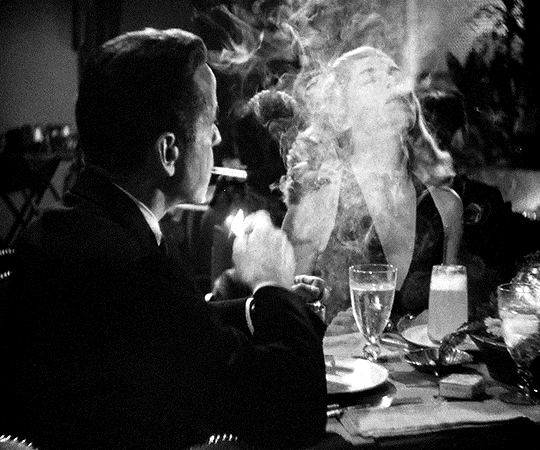
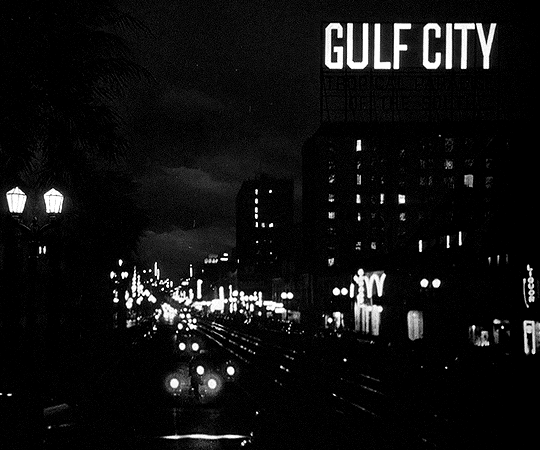
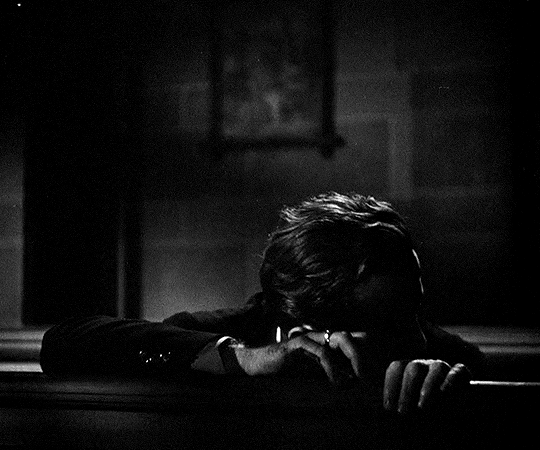


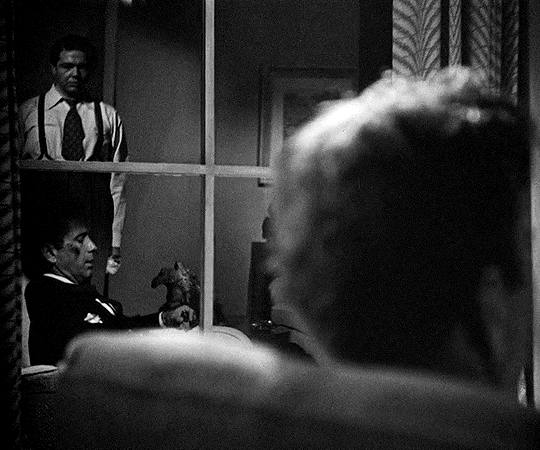

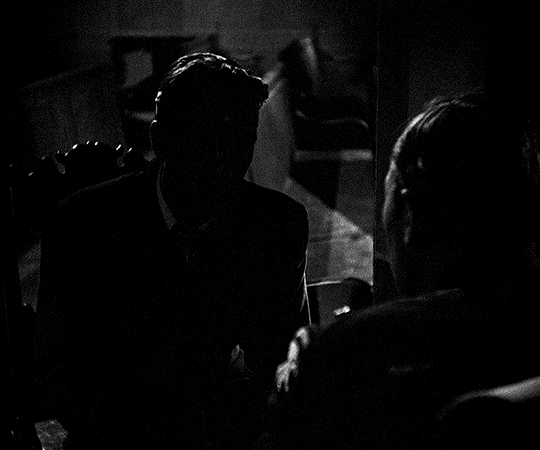

Don't you love me? - That's the tough part of it, but it'll pass. Those things do, in time. And there's one other thing—I loved him more.
DEAD RECKONING 1947, dir. John Cromwell
670 notes
·
View notes
Text

James Mason, Dan Duryea, and William Conrad in One Way Street (Hugo Fregonese, 1950)
Cast: James Mason, Märta Torén, Dan Duryea, Basil Ruysdael, William Conrad, Rodolfo Acosta, King Donovan. Robert Espinoza, Tito Renaldo, Margarito Luna, Emma Roldán, George J. Lewis. Screenplay: Lawrence Kimble. Cinematography: Maury Gertsman. Bernard Herzburn, Alfred Ybarra. Film editing: Martin Carruth. Music: Frank Skinner.
0 notes
Text
FORDANC | consideration of the future
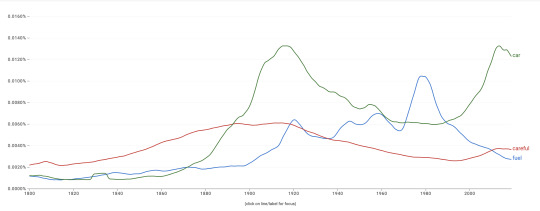
MMXXIV | ΔΩΜ.ΑIΝ.ΣΤ | ΖΚΗ
THESIS: The surge of the use of the word "careful" pre-emptively conditioned Amerian English users for the additional responsibility of maintaining a motor vehicle. LEXIGRAM: What googles gram viewer does is displays a graph showing how searchable phrases have occurred in a corpus of books over the span of years. Literature was the primary form of information dissemination, education and entertainment so it seems a statistically reliable gauge for our gaze backward in time. (Unless the uncatalogued books in the Vatican Archives hold some untold secrets...jk.) THE MATTER : While pundits will argue til the cows come home about when the first functional car for mass production was developed in America, the point of note is when gasoline fuel cars rolled onto the scene.
It's no secret that the letters to spell "fuel" are present in the word "careful".
And while almanacs and statistics may be unable to provide us with insight into the actuality of the increased risk of danger during the time in which the word "careful" climbed the charts, it's statistically telling of a prescience. A herald of things to come.
The Duryea brothers, Charles and Frank, of Illinois, released the first mass production gasoline combustion engine-driven automobile in September of 1893. (Brittanica)
For preliminary comparison purposes, lets look at the lexigrams for "careful" and "fuel" in the year 1805, the year Philadelphia-based inventor Oliver Evans released his steam-powered amphibious vehicle:

Fairly low usage compared to nearly a century down the line.
Now lets take a look back at the year the Duryea brothers released the first combustion gasoline-fuel-powered vehicle in 1893:
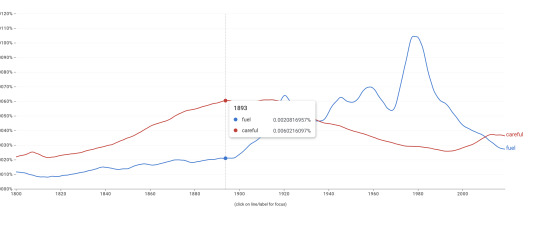
The term "fuel" hadn't made much progress in the way of the big stage of words. But we see "careful" reached the first of its two most significant peaks during the same year that the gasoline automobile hit the streets.
Why? Well, it could have been for any number of reasons. Increased hazards to pedestrian citizens and drivers alike as municipal and federal entities kicked the American infrastructure development into overdrive.
"Careful" and "fuel" converge in equilibrium of use for the first time in the year 1918. And while pinpointing the exact cause of that conversion may be impossible, we're left to wonder or imagine reasons.
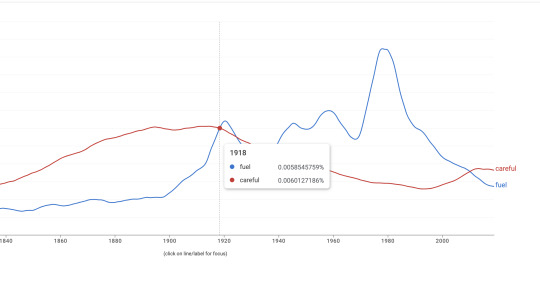
I would posit that the term "careful", being a conduit for the word "fuel" by proxy, saw a surge in the years leading up to its convergence with "fuel" as a collective subconscious effort to condition the act of "fuel"ing a car as a canon duty.
In 1920 we see "fuel" reach it's first peak.

All the subconscious priming paid off as "careful" subsided in use as "fuel" reached its A-HA! moment in the American psyche, the realization that it was a staple of a new way of living in a more interconnected society less constrained by the limits of time and distance.
Not to mention, the introduction of regulations and safety standards in developing automotive and manufacturing industries alike likely contributed to the subsiding of the term "careful", despite OSHA (the Occupational Safety Hazard Administration) being another 50 years ahead. As the concept of "fuel" became more accepted, so ebbed the necessity for a word containing an imperative anagram ("careful" : "fuel car"). By 1978, the term "fuel" had reached the height of its circulation. While, inversely, "careful" was only years away from its lowest point of usage.
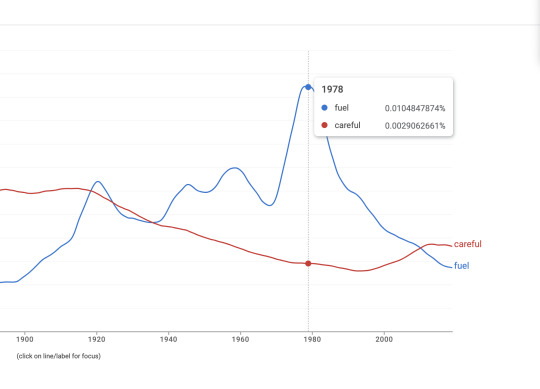
The term "car" reached its peak around the time Henry Ford's vehicles would have been in wide circulation. Nearly exactly around the time that "careful" and "fuel" first intersected.

Alls I'm saying is the fates are real fancy. Alfred the Great of Wessex catalogued in his Old English transcripts of the Psalters the singular occurence of the word "fordanc", meaning "consideration of the future".

Anybody out there speak Ye Old English? Maybe you can add some historical context. Whether or not related to the serendipitous or providential? oddity I'm at here.

Anyways, we se a resurgence of the term "car" in our literature, reaching a second denouement around 2013 as the electric and hybrid automobile industry came into its domain. Simultaneously we see a sharply inverse parity between the usage of the terms "car" and "fuel" in the years preceding. And knowing our modern capitalist system, that was likely a more meticulously crafted campaign to disassociate the idea of "car" with "fuel" that whatever fateful intelligence spent so long preparing society for.

Here we see "gasoline" was actually never really a popular term among the mass writing and printing industry:

Even so, shorthand "gas" for "gasoline", still took a dive in relation to "car".

The thing that gets me is the word FORDANC. History's weird like that. One of those phenomena that's either Ripley's Believe it or Not or there's a rip in the fabric of spacetime. In retrospect, this probably counts as a subconscious response to having heard the phrase "be careful" in use by people in passing. I know it's a well-wish...or I think it is. In part of my mind, it presupposes that the conditions for unforeseen calamity are ripe and I am somehow unawares.
What about you? When you bid someone farewell, do you say "be safe" or "be careful"? Or something else? I'd rather not passively condition a fear pre-response in people I care about. Or even in people I don't know.
"Be careful" implies that there is looming danger or that you are somehow not in line with expected norms.
Being aware of one's own operating in the peripheral spaces renders "be careful" a moot annoyance if I'm being honest.
So what's our next equivalent of a 3,000-pound death machine? Siri? Chat GPT? Cookies from your favorite website? Facebook? We haven't reached a Vonnegutian 2BR02B-esque euthanasia craze yet. And so far, aside from my own internal struggles (which have admittedly impacted my life in some ways), I feel we live in a relatively safe country.
Maybe it's was the norns. The fates. The muses. The angels. But danger themselves they are not. Merely harbingers of change. In my mind the Pantheon's lesser beings always seemed to view mankind with a vast aloofness. In retrospect I realize that is only a reflection of the interest I took in them. Which, until recently was none.
Angels have their orders and prophets. Muses their artists and projects. Elons their pockets and rockets.
And me? Well, all I've got about me right about now is my wits. And even they ain't there all the time.
Anyways, thanks for reading if you made it this far. I'm' trying to migrate from a mosaic spiritual style of rhetoric to a more historically based, realistic modus of operandi in our "ever-changing" world.
That should be "worlds". For as our inner worlds change, our relation to our outer worlds is altered in proportion. As far as scale and particular contingencies, I'm still working that out. But so far I like what I see.
It's the responsibility shared to mediate our relationship to the future by understanding the past. Here I merely present one way in which so to do.
I see order. I see guidance. I see potential in us. Potential for good.
And I hope you do, too.
٠ع إِ ن ة ئ
0 notes
Text
A Car In Every Garage
The first gas-powered automobile dates to 1886, when Karl Benz registered his patent in Germany. A few years later, in 1893, Charles Duryea and J. Frank patented their car in the US, and began selling it in 1896.
But it would take until the 1950s, following WWII and the Korean War, for car culture to fully blossom. That’s when people started moving to the suburbs to chase what they had been told—I mean sold—was the American Dream. That included a house, a car in the driveway, and an abundance of possessions. You can always tell the 1950s-era houses in a community, because they typically came with a one-car garage, a place to protect your ride.
More cars implied need for more roads, a trend that had been put in place in the 1910s, and proceeded unabated. President Dwight D. Eisenhower signed the Federal Aid Highway Act of 1956 into law, thereby laying the foundation for the interstate highways we have today.
The number of registered motor vehicles in the US now exceeds 286 million, which is pretty amazing given that there are 334 million of us, and you have to be 16 to drive one. Our interstates are in dire need of upgrading to accommodate so many vehicles, and it seems that one of our biggest concerns is where to leave our car when we’re not driving it.
The answer, as it turned out, was to pave paradise and put up a parking lot. Joni Mitchell sang of this problem back in 1970, and it has only gotten worse. Take a look around downtown Amarillo, where once-historic buildings stood, only to be demolished and the land paved for—you guessed it—parking.

Today, there are roughly two billion parking spots in the US, which amounts to about seven parking spots for each vehicle. And yet we frequently complain when we can’t find a place close to our destination, as if close parking were an entitlement. Can you believe that the WT campus once had curbside parking throughout? When the university made the pedestrian mall early this century, people complained because they would have to walk a little farther from their car.
People are willing to pay a king’s ransom just to park. It now costs $30 to park at Disneyworld in Florida, and at a recent pre-season Cowboys game we attended in Arlington, parking was $60 close to the stadium, and $40 a mile away. Parking lots become exceedingly valuable real estate whenever something fun is going on nearby.
Those are extravagances, though, and one should expect to pay for the privilege to park your car. But what about all the other times we have to park, like when shopping? How is the number of parking spots calculated? And why, even if there are seven spots for each vehicle, does it feel like there are never enough when we need them? Worse yet, why are people sometimes willing to do laps around the parking lot in hopes they might get a coveted close spot?
There is method to this madness, and it boils down to mandatory minimums for every store, office building, theatre, and bowling alley. While the algorithm varies by city, it is a function of the square footage of the building. The bigger the building, the more spots needed. Acres and acres of paving also contribute to run-off problems when it rains, because that water has to go somewhere.
All of this has reshaped how and where we shop. Suburban malls and strip centers have vast oceans of pavement that are usually only filled to the limit during holiday shopping season. Instead of shops being built right up against the sidewalk, now the stores are set back a considerable distance from the road. The result is a very pedestrian-unfriendly area, for those willing to try to walk.
There is now movement afoot to scrap parking lot minimums for new construction in some areas, but as long as we are a car-centric society, the problem will persist. We have created a mess, and all because we fell in love with the car. Want to see a good example of marketing? Look no farther than wherever your car is parked. We bought it, embracing the freedom that a vehicle represents, and in the process, we made our bed. Now we have to lie in it.
I not only get it, I am also contributing to the problem. I thank my lucky stars on those rare occasions when I get a close spot at Walmart, as if God were shining down on me. “I must be living right,” I say. Otherwise, I suck it up and walk, and in some instances, curse an imaginary civil engineer for not having the foresight to predict my arrival.
And yet once I do find a spot, there are six more with my name on it somewhere else, presumably empty. If we could solve this paradox, we’d be well on our way to happier living for all. It’s just that I think it is too late to turn this car around. We’ve hit a dead end on a one-lane road.
Dr “Park It And Leave It” Gerlich
Audio Blog
1 note
·
View note
Text
CAR HISTORY

There are many different types of automobiles – steam, electric, and gasoline – as well as countless styles. Exactly who invented the automobile is a matter of opinion. Earlier accounts often gave credit to Karl Benz, from Germany, for creating the first true automobile in 1885/1886. However, our knowledge of the invention of the true automobile continues to evolve. The story of the invention of the automobile has become enriched with various other figures who played a part in its history.
James Duryea completed the first Duryea automobile in 1893, in Springfield, Massachusetts, working with his brother’s design. In 1895, the Duryea’s established the first American automobile manufacturing company. On Thanksgiving Day, 1895, in what was dubbed the “Race of the Century,” Frank Duryea won a 54-mile race from Jackson Park in Chicago to Evanston and back again. It was a race sponsored by Herman H. Kohlsaat, publisher of the Chicago Times_herald. The prize money was $2,000 but in addition to the prize money, the Duryea brothers also became celebrities.
The sudden rush of fame allowed the brothers to form the Duryea Motor Wagon Company and produce early 1900s cars. Orders began arriving soon and unofficially, the American automobile industry was born as the brothers manufactured the first of 13 vehicles in 1896. But by the end of the century they had split up, destroyed by envy and greed. Their place in automotive history was secure though they would play relatively minor part in the development of future 1900s cars. They were successful in the beginning but it was a short-lived success.
By 1900, at least 100 different brands of horseless carriages were being marketed in the United States. Since they were all virtually handmade, the cars were outrageously expensive. Cars were perceived as no more than a high-priced toy for the rich. The early 1900s cars were, to many, a despicable symbol of arrogance and power. Nevertheless, the horseless carriage was finding buyers, hence a niche in the marketplace, and demand for this new toy was growing.
In many metropolitan areas – New York, Boston, and Philadelphia, electric cabs, delivery trucks, and ambulances became more and more familiar sights.
Although Olds and Cadillac developed the idea of standardized and interchangeable parts, it was Henry Ford who developed mass production and made possible rapid production of the early 1900s cars.
The basic idea of interchangeable parts made possible the assembly line. Whereas before it took 12 hours to assemble a Model T, by 1914, new Model T’s now come off the assembly line at the rate of one car every 24 seconds and with that speed, the price of these early 1900s cars came down to $290 – a price within reach of the average car buyer.
0 notes
Text
Lizabeth Scott's screen image goes hand-in-hand with Film Noir. Lizabeth Scott was always compared to Lauren Bacall since they shared some physical attributes and their voices were unusually deep for women. Both women had been tagged with an image moniker: Lauren Bacall was known as "The Look" and Lizabeth Scott was called "The Threat" which derived from a critic's description of Scott: "She's the Threat, to the Body, the Voice and the Look." "The Body" (Marie McDonald), "The Voice" (Frank Sinatra) and "The Look" (Lauren Bacall). Of all her films the one that she will be remembered for will be Too Late For Tears (1949, United Artists) here she plays Jane Palmer a femme fatale in every sense of expression here displaying a complete lack of conscience and empathy as she murders anyone who gets in her way. She was so convincing as the seductive, husky-voiced scheming who is pathologically unable to understand the enormity of her crimes. One of her first victims was her poor husband who didn't have a chance. Even the presence of Dan Duryea a noted Noir villain himself could not even save himself against Scott. Of her 22 films, she was the leading lady in all but one. What set her apart from other film noir actresses was her unmannered projection of the now archaic tough girl which was direct and vibrant thus elevating it from the confines of its times. Scott's style of acting, characteristic of other film actors of the 1940s -- a cool, naturalistic underplay derived from multiple sources -- was often not appreciated by critics who preferred the more emphatic stage styles of the pre-film era or the later method acting styles. With rare exceptions in films as Paid In Full (1950,Paramount Pictures) here as the good sister who sacrifices everything even her own life for her self-centered younger sister played with verve by Diana Lynn. Usually Lizabeth Scott was stereotyped on the screen as the corrupt chanteuse who had no desire or will to change her sinister ways. Meaning that Scott was doomed to find a worthwhile good guy to love her but only when it was too late and she had already passed the point of redemption. In 2003, film historian Bernard F. Dick interviewed Scott for his biography of Wallis. The results was an entire chapter titled "Morning Star." In the chapter, the author observed that during the interview, Scott (then 80 or 81 years old) was still able to recite her opening monologue word for word from the play "The Skin of Our Teeth", which she had learned six decades earlier. Lizabeth Scott died of congestive heart failure at the age of 92 on January 31, 2015.

219 notes
·
View notes
Photo


@tcmparty live tweet schedule for the week beginning Monday, January 25, 2021. Look for us on Twitter…watch and tweet along…remember to add #TCMParty to your tweets so everyone can find them :) All times are Eastern.
Monday, January 25 at 8:00 p.m. CRISS CROSS (1949) A man tries to save his fickle ex-wife from her criminal lover.
Saturday, January 30 at 5:45 p.m. CAPTAIN BLOOD (1935) After being unjustly sentenced to prison, a doctor escapes and becomes a notorious pirate.
#schedule#robert siodmak#burt lancaster#yvonne de carlo#dan duryea#stephen mcnally#joan miller#tony curtis#frank planer#film noir#michael curtiz#errol flynn#olivia de havilland#odh#lionel atwill#basil rathbone#ross alexander#guy kibbee#henry stephenson#robert barrett#hobart cavanaugh#donald meek#jessie ralph#forrester harvey#erich wolfgang korngold#ernest haller#action#adventure#swashbuckler#many buckles were swashed
18 notes
·
View notes
Text

Patricia Owens-Dan Duryea "Asesinato por error" (Walk a tightrope) 1964, de Frank Nesbitt.
4 notes
·
View notes
Text
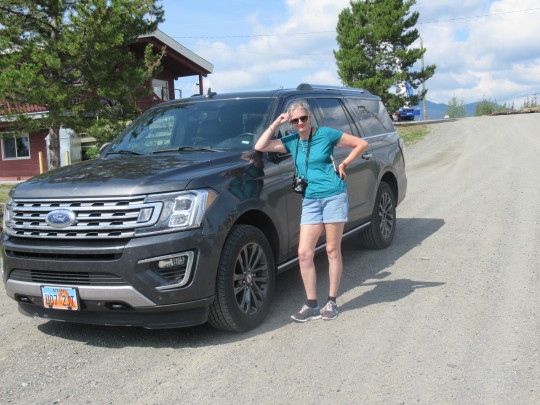
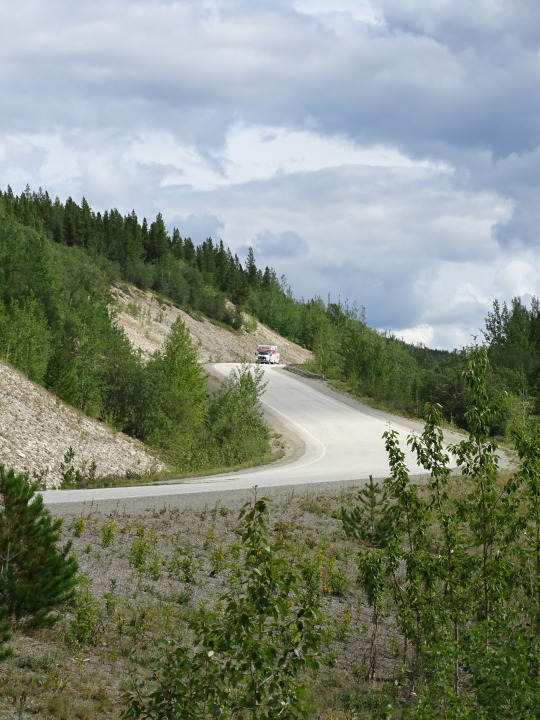





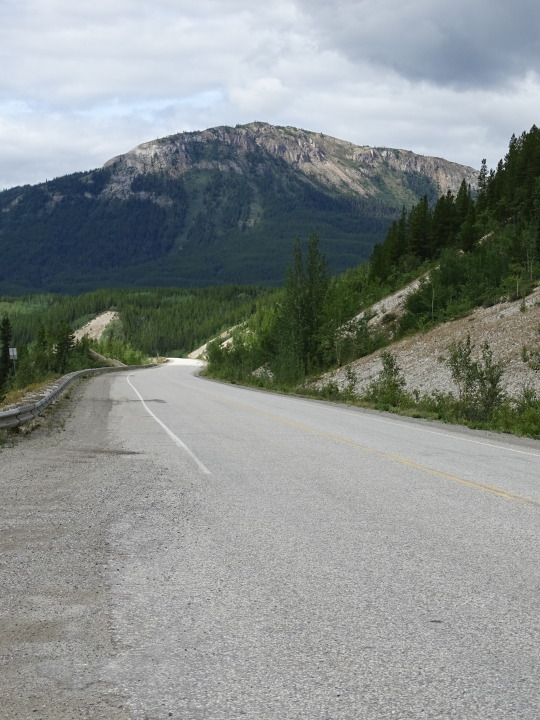



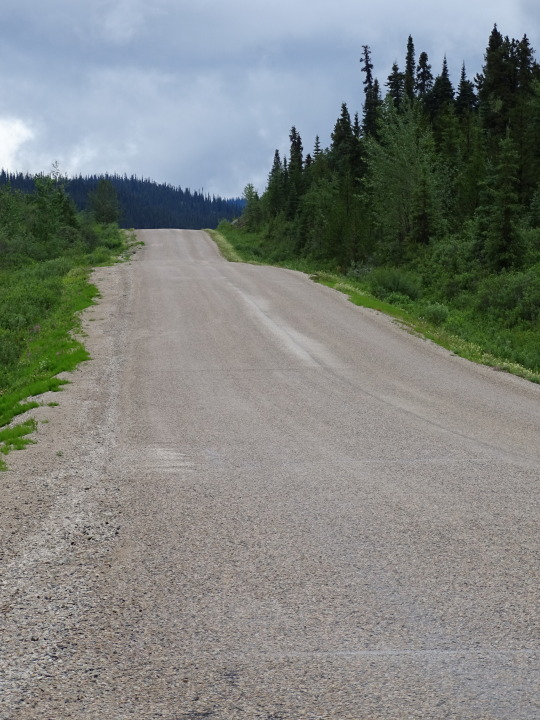



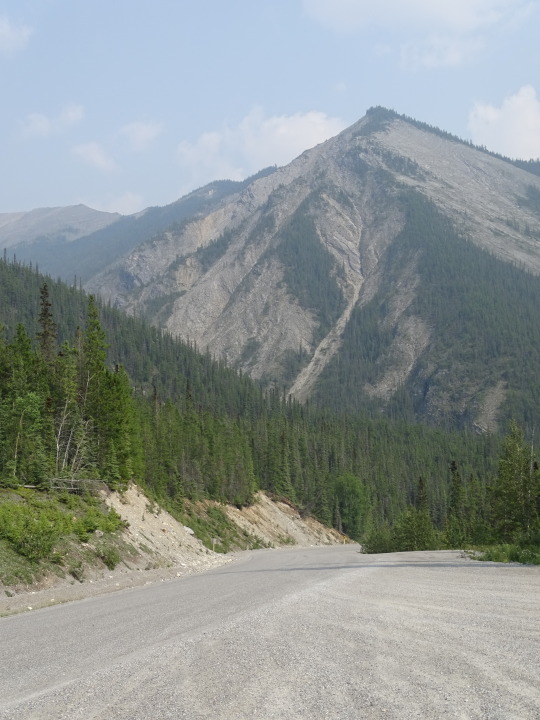
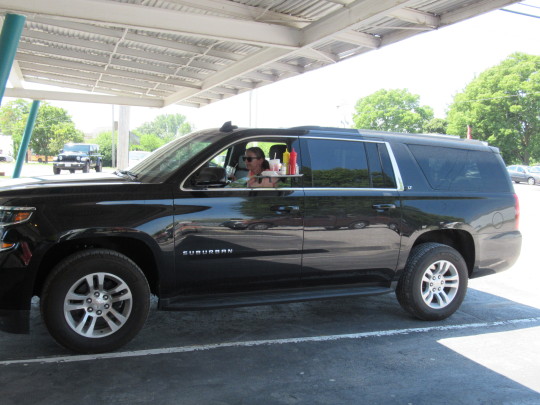
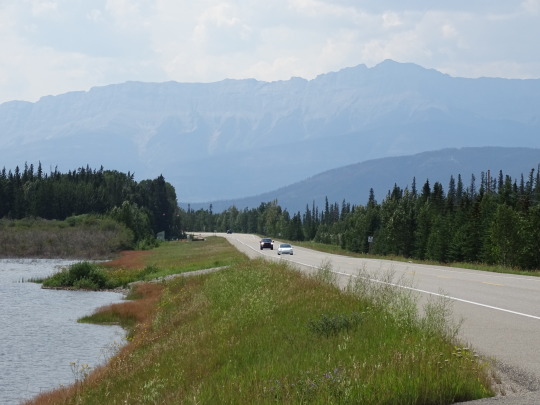
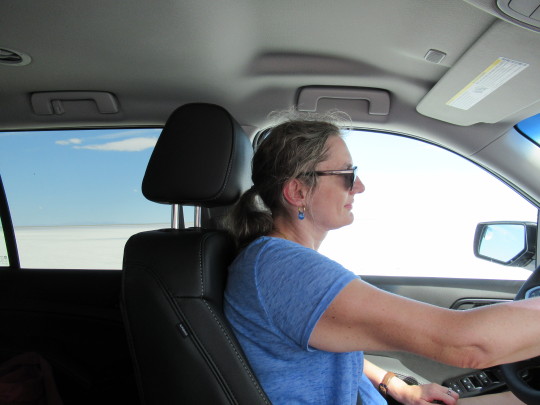
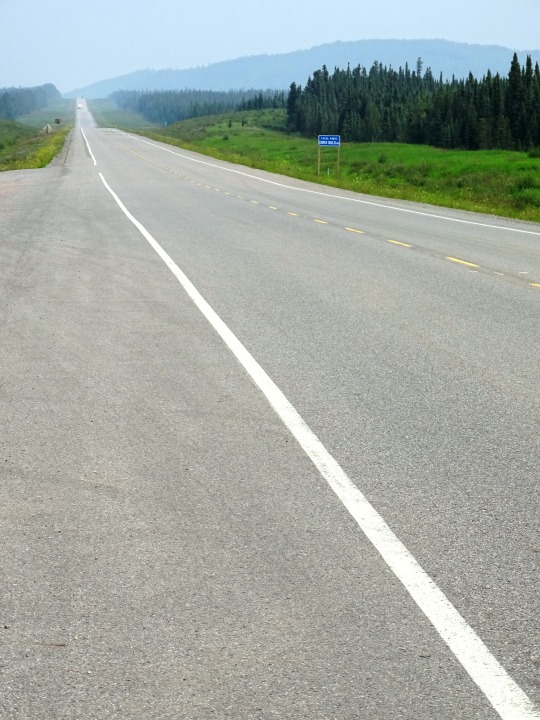
Go For a Ride Day
Go For a Ride Day, celebrated on November 22, urges you to just get up and get out! Do you ever feel like you’re tied to your laptop/phone/tablet screens? We’ve become a pretty sedentary bunch — a far cry from the people who discovered countries, oceans, and animals simply by getting off the couch and exploring. Make today a day to set your spirit free and enjoy your wanderlust on whatever mode of transportation suits you best. Bike, boat, car, skateboard, sleigh—it doesn’t matter what you choose! Pick a location you’ve always wanted to visit and make today the day you’ll go.
History of Go For A Ride Day
Birthdays are fun and Christmas means presents (if you’re lucky), but nothing quite compares with the magical day you get your driver’s license. That’s when your world truly changes forever. Why? Cars mean freedom. You can suddenly go anywhere at anytime (as long as your parents are cool with your plans). Such is the nature of transportation — something we in the 21st century take for granted. We all grew up with planes, trains and automobiles — so we’re quite used to getting where we need to go.
But it wasn’t always that way. When President Jefferson asked Lewis (and, eventually, Clark) to explore the American West in 1804, there were no nonstop flights from St. Louis to the Oregon coast. As the History Channel describes it: “The excursion lasted over two years. Along the way they confronted harsh weather, unforgiving terrain, treacherous waters, injuries, starvation, disease and both friendly and hostile Native Americans. Nevertheless, the approximately 8,000-mile journey was deemed a huge success and provided new geographic, ecological and social information about previously uncharted areas of North America.”
And today we complain about trying to squeeze our carry-ons into the overhead bin.
Americans have always loved to “go for a ride” — with whatever mode of transportation existed. Horses. Boats. Bicycles. And of course, the ubiquitous car. The nation had a long love affair with automobiles starting in the mid 20th century and lasting until recently — as a new generation of car buyers, born after the car craze, loses interest in design — focusing instead on practicality. Stellar gas mileage makes Priuses as sexy as Porsches. Well, almost.
Go For A Ride Day timeline
1950s Car culture
Cars inspired new businesses like drive-through restaurants and drive-in movie theaters, and employed one in six working Americans.
1956 Interstate highways
President Eisenhower authorizes $25 billion for the construction of 41,000 miles of the Interstate Highway System.
1964 ‘Pony car’
Ford introduces the sporty and powerful Mustang — the automaker's most successful launch since the Model A.
2019 Driverless cars get smarter
MIT engineers develop a system to help autonomous cars determine if there’s a moving object coming around the corner.
Go For A Ride Day FAQs
What does Go For A Ride Day celebrate?
Go For a Ride Day 2019 encourages us to get out in the world, as opposed to seeing it on a screen. Any mode of transportation will do on this day. What was America’s first car company?
Brothers Charles and Frank Duryea founded the Duryea Motor Wagon Company in 1893, becoming the first American automobile manufacturing company. What happened to supersonic jet travel?
The Concorde, which flew faster than the speed of sound, never turned a profit. When the plane broke the sound barrier (about 760 mph), it created shock waves that would hit the ground with a loud and sudden sonic “boom.” The FAA eventually banned all commercial aircraft from flying at supersonic speeds over land.
Go For A Ride Day Activities
Make it fun
Make it easy
Make it memorable
Dare yourself to try something new and adventurous. Why not try a mode of transportation you’ve never used before? Suggestions include jet skiing, parasailing, or going on a hot air balloon ride. In colder climates you could try a sleigh ride, or a horse drawn carriage.
Maybe you weren’t born to be wild, but don’t let that stop you from joining in the fun. Play tourist in your own city or neighborhood. Use public transit and see the sights like visitor.
Exploring is an adventure, but it can be even more fun if you have someone to share it with. Bring along an adventurous friend or family member to help make some memories. If your local friends are sticks in the mud, then bring your more adventurous friends along virtually by posting your adventure to Facebook, Instagram, or Twitter.
Why We Love Go For A Ride Day
It’s an escape from reality
It can be great exercise
It helps us be spontaneous
Every now and then we just need something to break up the status quo and make us feel alive! Go For A Ride Day exists for that very reason. It can be hard to get motivated to see new places or even try new foods, but Go For A Ride Day provides the momentum.
You can try skateboarding or using a scooter. How about getting out your helmet and going for a long bike ride? Did you know you can burn over 400 calories an hour horseback riding?
Our lives tend to run to the predictable, and for the most part, that predictability helps the world go round. But we all still have a small streak of rebellion, and that's what Go For a Ride Day helps bring out.
Source
#Dinosaur National Monument#GMC Yukon#Mono County#USA#rental car#summer 2022#Sweden#original photography#engineering#travel#road trip#vacation#Van Wert#Chevrolet Suburban#Bonneville Salt Flats#Chevrolet Tahoe#Hyundai#Spain#Canada#Go For a Ride Day#22 November#NationalGoForARideDay#Ford Expedition#2023#Teslin
0 notes
Text
Events 11.28 (before 1920)
587 – Treaty of Andelot: King Guntram of Burgundy recognizes Childebert II as his heir. 936 – Shi Jingtang is enthroned as the first emperor of the Later Jin by Emperor Taizong of Liao, following a revolt against Emperor Fei of Later Tang. 1443 – Skanderbeg and his forces liberate Kruja in central Albania and raise the Albanian flag. 1470 – Champa–Đại Việt War: Emperor Lê Thánh Tông of Đại Việt formally launches his attack against Champa. 1520 – After 38 days, an expedition under the command of Ferdinand Magellan completes the first passage through the Strait of Magellan and enters the Pacific Ocean. 1582 – In Stratford-upon-Avon, William Shakespeare and Anne Hathaway pay a £40 (equivalent to £12,261 in 2021) bond in lieu of posting wedding banns, which enables them to marry immediately. 1627 – The Polish–Lithuanian Commonwealth Navy has its greatest and last naval victory in the Battle of Oliwa. 1660 – At Gresham College, twelve men, including Christopher Wren, Robert Boyle, John Wilkins, and Sir Robert Moray decide to found what is later known as the Royal Society. 1666 – At least 3,000 men of the Royal Scots Army led by Tam Dalyell of the Binns defeat about 900 Covenanter insurgents led by James Wallace of Auchens in the Battle of Rullion Green. 1785 – The first Treaty of Hopewell is signed, by which the United States acknowledges Cherokee lands in what is now East Tennessee. 1798 – Trade between the United States and modern-day Uruguay begins when John Leamy's frigate John arrives in Montevideo. 1811 – Beethoven's Piano Concerto No. 5 in E-flat major, Op. 73, premieres at the Gewandhaus in Leipzig. 1814 – The Times of London becomes the first newspaper to be produced on a steam-powered printing press, built by the German team of Koenig & Bauer. 1821 – Panama Independence Day: Panama separates from Spain and joins Gran Colombia. 1843 – Ka Lā Hui (Hawaiian Independence Day): The Kingdom of Hawaii is officially recognized by the United Kingdom and France as an independent nation. 1861 – American Civil War: The Confederate States of America accept a rival state government's pronouncement that declares Missouri to be the 12th state of the Confederacy. 1862 – American Civil War: In the Battle of Cane Hill, Union troops under General James G. Blunt defeat General John Marmaduke's Confederates. 1885 – Bulgarian victory in the Serbo-Bulgarian War preserves the Unification of Bulgaria. 1893 – Women's suffrage in New Zealand concludes with the 1893 New Zealand general election. 1895 – The first American automobile race takes place over the 54 miles from Chicago's Jackson Park to Evanston, Illinois. Frank Duryea wins in approximately 10 hours. 1899 – The Second Boer War: A British column is engaged by Boer forces at the Battle of Modder River; although the Boers withdraw, the British suffer heavy casualties. 1905 – Irish nationalist Arthur Griffith founds Sinn Féin as a political party with the main aim of establishing a dual monarchy in Ireland. 1908 – A mine explosion in Marianna, Pennsylvania, kills 154 men, leaving only one survivor. 1912 – Albania declares its independence from the Ottoman Empire. 1914 – World War I: Following a war-induced closure in July, the New York Stock Exchange re-opens for bond trading. 1917 – The Estonian Provincial Assembly declares itself the sovereign power of Estonia. 1918 – The Soviet Forces move against Estonia when the 6th Red Rifle Division strikes the border town of Narva, marking the beginning of the Estonian War of Independence. 1919 – Lady Astor is elected as a Member of the Parliament of the United Kingdom. She is the first woman to sit in the House of Commons. (Countess Markievicz, the first to be elected, refused to sit.)
1 note
·
View note
Photo




White Tie and Tails (1946) Charles Barton
November 29th 2020
#white tie and tails#1946#charles barton#dan duryea#ella raines#william bendix#frank jenks#john miljan#clarence kolb#richard gaines#nita hunter#scotty beckett#barbara brown#donald curtis#samuel s. hinds#the swindlers
5 notes
·
View notes
Photo

Walk a Tightrope https://bit.ly/3G3qSrI Walk a Tightrope, a British B movie from 1964 packs more of a punch than you might expect, thanks to a properly ingenious story and a great performance by Dan Duryea, who adds the all-important element for British B movies of the era, a starring role for a second-string American actor at the tail end … Read more
1 note
·
View note